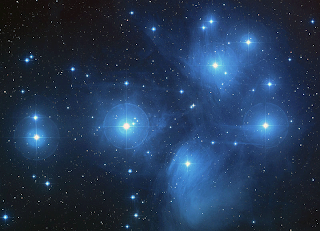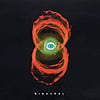Dorky stuff about the Universe
Comments
-
Saturday, Sept. 29 ...
• It's Harvest Moon tonight, the full Moon closest to the fall equinox (exactly full at 11:19 p.m. EDT).
The Moon shines in dim Pisces this evening, below the Great Square of Pegasus....********************************************************************************************* 0
0 -
I always get a kick when I read constellations being used to indicate the location of the moon.
1) like one couldn't find the moon otherwise? :wtf: and
2) if the moon is full, It's usually impossible to see the background constellations anyway0 -
Friday, Oct. 5
• Jupiter comes up over the east-northeast horizon around 9:30 or 10 tonight, followed a half hour later by the nearly last-quarter Moon. They rise higher as night grows late...********************************************************************************************* 0
0 -
As we move into the next season .... LET IT BE KNOWN THAT THE MAD SEASON BOX SET WILL HIT PLANET EARTH ON MARCH 12TH, 2013!!!!
8-)Be Excellent To Each OtherParty On, Dudes!0 -
Seems like every time I'm wowed by something "otherworldly" within this vast-ass space, something closer to home wows me more.
http://www.bing.com/videos/watch/video/ ... orm=msnrll0 -
hedonist wrote:Seems like every time I'm wowed by something "otherworldly" within this vast-ass space, something closer to home wows me more.
http://www.bing.com/videos/watch/video/ ... orm=msnrll
That is amazing -********************************************************************************************* 0
0 -
*********************************************************************************************
 0
0 -
solar eclipse next month people... get on it! 8-) <<<< this is me wearing my eclipse watching glasses.
http://eclipse.gsfc.nasa.gov/SEgoogle/S ... oogle.htmlhear my name
take a good look
this could be the day
hold my hand
lie beside me
i just need to say0 -
NEW PLANET!!!
http://www.abc.net.au/news/2012-10-18/n ... rd/4319592
Astronomers have found a new planet, the closest yet outside our solar system and just an astronomical stone's throw away at four light years, raising the chances of finding a habitable planet in Earth's neighbourhood.
Researchers say the new planet is too close to its sun to support known forms of life, with a surface temperature estimated at 1,200 degrees Celsius.
But previous studies suggest that when one planet is discovered orbiting a sun, there are usually others in the same system.
The new Earth-sized planet, announced in science journal Nature by Stephane Udry and Xavier Dumusque at the Geneva Observatory, orbits one of the suns in Alpha Centauri, roughly 40 trillion kilometres away.
"It's a landmark discovery because it's very low mass and it's our closest neighbour," Mr Udry said.
"Its orbit is very close to its star and it must be much too hot for life as we know it, but it may well be just one planet in a system of several."
Commenting on the find, University of California astronomer Greg Laughlin said: "This is our backyard, so to find out that planet formation occurred there is just extraordinary."
Since the discovery of the first exoplanets - those outside our solar system - in the early 1990s, more than 800 have been found but this one is the closest to Earth.
Getting there is extremely unlikely in the foreseeable future.
Mr Laughlin estimates it would take about 40,000 years to travel to the new planet with current propulsion technology.
It was detected using the HARPS instrument on a telescope at the European Southern Observatory's La Silla site in Chile.
The device is able to pick up tiny changes in the colour of the light coming from a host star as it wobbles under the gravitational influence of orbiting planets.
Minute shifts
The gravitational effect in this case is minute, causing it to move back and forth by no more than 51 centimetres per second.
Alpha Centauri is a three-star system consisting of two stars similar to our sun and a faint red star called Proxima Centauri.
The planet orbits Alpha Centauri B.
Astronomers have speculated about planets orbiting these suns since the 19th century, but small planets like this are hard to find and instruments have only recently become sensitive enough to detect them.
"Our observations extended over more than four years using the HARPS instrument," Mr Dumusque said.
The researchers said they will make their data available to other astronomers to test their findings, but in the meantime some remain sceptical.
"Actually, I still have my doubts," German astronomer Artie Hatzes said.
He said the wobble detected in the star could be caused by a series of other factors, including sun spots, so the data need to be tested by other researchers.
"These activity variations have to be filtered from the data before one can extract the signal due to the possible planet," he said.
"It could well be that someone else analysing the same data may come up with a different conclusion.
"That is why I am not 100 per cent certain."
But Mr Dumusque is confident.
"We have considered in this analysis all the known possible explanations, including instrumental noise and stellar origin," he said.
"In the end, the planetary solution is the most likely one."
hear my name
take a good look
this could be the day
hold my hand
lie beside me
i just need to say0 -
we are outer space
it's just that because of our angle, we can't tell0 -
Have you ever wondered why stars twinkle at night?
The twinkling of stars is actually caused by the movement of Earth’s atmosphere. The light emitted by the star enters the atmosphere in a straight path, but we see stars twinkling because air movements in our atmosphere change the paths constantly, hence the twinkling... *********************************************************************************************
********************************************************************************************* 0
0 -
Friday, October 19
• The crescent Moon shines in the southwest as twilight fades. If it were a bow, it would be shooting an arrow to the lower right above the Mars-and-Antares pair.
• The annual Orionid meteor shower should be getting under way in the hours before dawn Saturday morning, and it should continue in the early-morning hours for the next few days. You may see 10 or 20 Orionids per hour. The shower's radiant point is at the top of Orion's Club, which doesn't rise high until after well midnight. There will be no moonlight for the next few mornings.********************************************************************************************* 0
0 -
catefrances wrote:NEW PLANET!!!
[/i]
Excellent! What shall we name it?"It's a sad and beautiful world"-Roberto Benigni0 -
brianlux wrote:catefrances wrote:NEW PLANET!!!
[/i]
Excellent! What shall we name it?
Most Likely0 -
hear my name
take a good look
this could be the day
hold my hand
lie beside me
i just need to say0 -
mikalina wrote:Have you ever wondered why stars twinkle at night?...
not since i was younger and found out why they do. now i just mistake them for airplanes. hear my name
hear my name
take a good look
this could be the day
hold my hand
lie beside me
i just need to say0 -
catefrances wrote:
the planet's not in our solar system, btw0 -
mikalina wrote:The annual Orionid meteor shower should be getting under way in the hours before dawn Saturday morning, and it should continue in the early-morning hours for the next few days.
Saw a whole bunch of these last night. Two in particular were very awesome; one left a long green streak across the sky, and the other left a long orangish streak. the streaks remained for about 2 seconds after the meteor disappeared.0 -
rollings wrote:catefrances wrote:
the planet's not in our solar system, btw
dont care where it is, its new. hear my name
hear my name
take a good look
this could be the day
hold my hand
lie beside me
i just need to say0
Categories
- All Categories
- 149.1K Pearl Jam's Music and Activism
- 110.2K The Porch
- 283 Vitalogy
- 35.1K Given To Fly (live)
- 3.5K Words and Music...Communication
- 39.4K Flea Market
- 39.4K Lost Dogs
- 58.7K Not Pearl Jam's Music
- 10.6K Musicians and Gearheads
- 29.1K Other Music
- 17.8K Poetry, Prose, Music & Art
- 1.1K The Art Wall
- 56.8K Non-Pearl Jam Discussion
- 22.2K A Moving Train
- 31.7K All Encompassing Trip
- 2.9K Technical Stuff and Help





